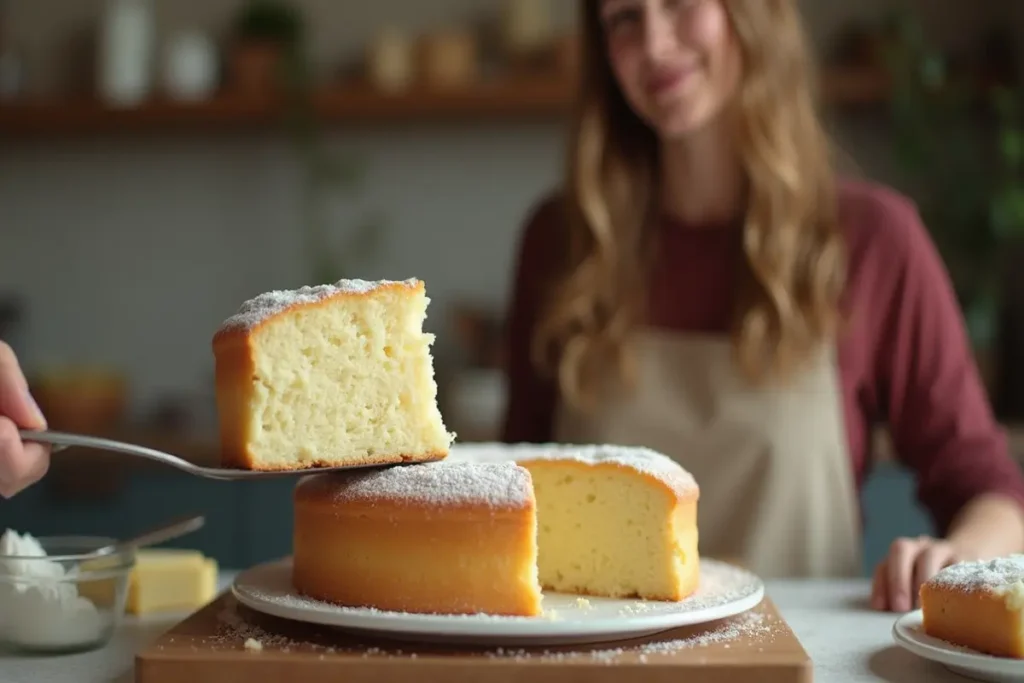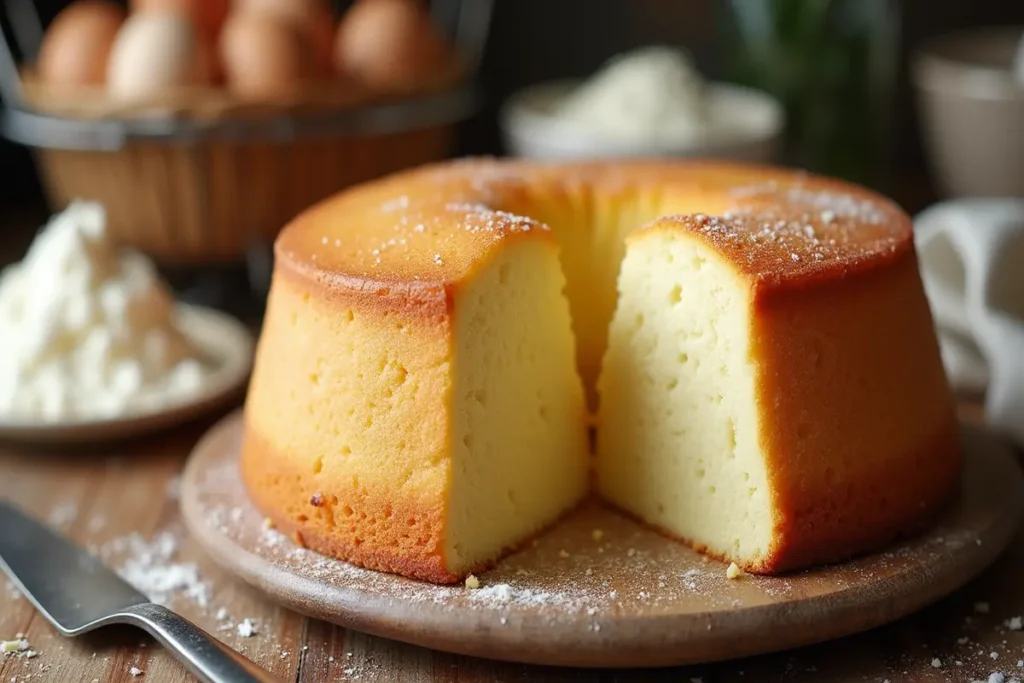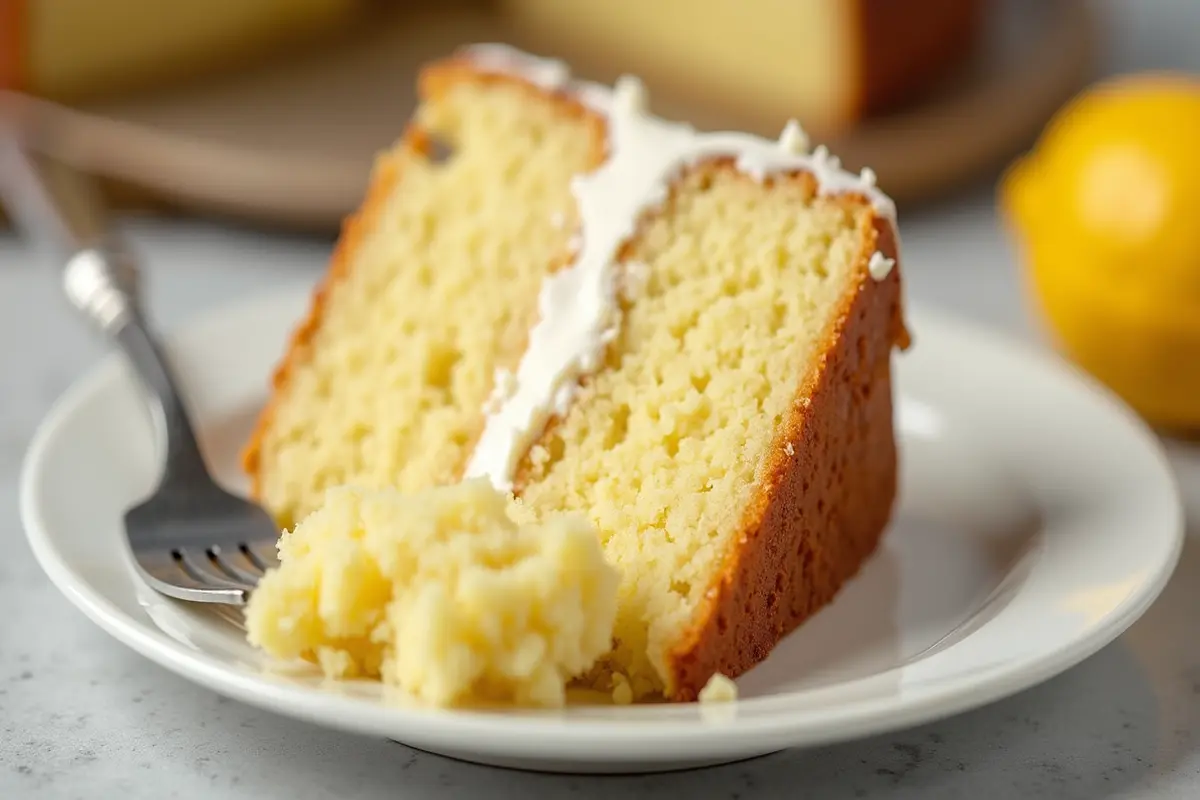This article explores the effects of ricotta cheese on cakes, detailing its impact on texture, flavor, and overall baking results.
Introduction: The Surprising Role of Ricotta in Cakes
Many bakers wonder, what does ricotta do to cakes? Indeed, this seemingly simple cheese can transform a cake’s character. Moreover, adding ricotta can affect texture, moisture, and even the overall flavor profile. Consequently, understanding its role is key to using it effectively. Therefore, this article will delve into the impact of ricotta in cake recipes.
The Impact of Ricotta on Cake Texture
Ricotta and Cake Moisture: A Key Benefit
One of the main things ricotta does to cakes is increase moisture. Therefore, its creamy nature adds hydration to the batter. Likewise, this results in a more tender and moist crumb. Moreover, ricotta helps cakes stay fresh longer. Hence, cakes with ricotta tend to be less dry compared to others. Consequently, it is a great way to prevent a dry outcome in baking.
What Does Ricotta Do to Cake Crumb?
Additionally, ricotta contributes to the cake’s crumb structure. Therefore, it creates a finer, more delicate texture. Furthermore, the cheese’s proteins interact with the flour. As a result, this interaction creates a softer, less dense crumb. Also, cakes with ricotta often have a melt-in-your-mouth quality. Ultimately, this creates a more enjoyable eating experience.
Ricotta and Cake Density: Balancing Act
While ricotta adds moisture, it also impacts cake density. Therefore, the extra moisture can make cakes slightly denser. However, this is usually a pleasant denseness. Conversely, it can prevent cakes from becoming too light and airy. Furthermore, it can add a nice weight to the cake. Generally, using ricotta helps strike a balance in cake density.
Ricotta and the Overall Mouthfeel of Cakes
Moreover, ricotta significantly improves the mouthfeel of cakes. Specifically, it adds a creamy richness that is both comforting and satisfying. Indeed, this quality enhances the overall sensory experience of the cake. Furthermore, cakes with ricotta feel more luxurious and indulgent. Therefore, it provides a unique sensory quality to each bite.
How Does Ricotta Affect Cake Rise?
Also, ricotta can sometimes affect how a cake rises. Because, its moisture content might slightly hinder a very high rise. However, this is often minimal. Furthermore, the resulting cakes are still fluffy. Generally, proper baking techniques can mitigate this. Consequently, using ricotta doesn’t usually compromise the cake’s rise significantly.
Ricotta’s Influence on Cake Flavor
Ricotta and Flavor Enhancement: Subtle Sweetness
Many people ask, what does ricotta do to cakes in terms of flavor? Indeed, it adds a subtle sweetness and tang. Therefore, this complements other ingredients beautifully. Likewise, its mild flavor doesn’t overpower other flavors. Consequently, it enhances the existing flavor profile of the cake. Hence, ricotta provides a nuanced and appealing taste.
Ricotta and the Flavor of Other Cake Ingredients
Furthermore, ricotta has a unique ability to enhance other flavors in cakes. Specifically, it helps bring out the sweetness of vanilla, lemon, or citrus. Likewise, it complements spices like cinnamon or nutmeg. As a result, using ricotta can make the flavor profile of the cake more complex. Ultimately, it enhances and balances all the different flavors.
How Ricotta Complements Chocolate Cakes
Additionally, ricotta pairs exceptionally well with chocolate. Consequently, its subtle tanginess helps cut through the richness of the chocolate. Moreover, it adds a layer of creamy depth. Furthermore, chocolate cakes with ricotta tend to be more moist and flavorful. Indeed, this combination is a classic pairing for a reason.
Ricotta in Vanilla and Citrus Cakes
Moreover, ricotta is a wonderful addition to vanilla and citrus cakes. For example, in vanilla cakes, it enhances the subtle sweetness. Also, in citrus cakes, its tanginess complements the bright flavors. Indeed, using ricotta in these cakes creates a more balanced flavor profile. Ultimately, it enhances these classic flavors.
Does Ricotta Change the Taste Significantly?
While ricotta does add a layer of flavor, it is generally subtle. Therefore, it doesn’t drastically alter the taste of a cake. Consequently, the cheese’s mild taste allows other ingredients to shine. However, it adds depth and complexity. Thus, ricotta enhances the flavor without overwhelming it.
Practical Applications of Ricotta in Cake Baking
Best Practices for Using Ricotta in Cakes
When using ricotta in cakes, consider its moisture content. Therefore, it is important to adjust the other wet ingredients accordingly. Likewise, ensure the ricotta is well-drained if it is very watery. Furthermore, mix the ricotta gently into the batter. Thus, these steps can help you achieve the perfect cake texture.
Adjusting Recipes When Using Ricotta
Furthermore, adjusting your cake recipes is vital when including ricotta. Consequently, you might need to reduce other liquid ingredients slightly. Moreover, use full-fat ricotta for the best results. Likewise, it’s helpful to experiment to find the right balance. Hence, understanding these adjustments will improve your baking.
Types of Ricotta Suitable for Cake Baking
Generally, full-fat ricotta is best for cake baking. Indeed, it provides the richest flavor and creamiest texture. However, part-skim ricotta can also work, but may produce a slightly less rich cake. Moreover, always choose fresh, high-quality ricotta. Ultimately, the type of ricotta you select will impact your results.
Specific Cake Recipes that Benefit from Ricotta
Many cake recipes benefit from the addition of ricotta. For example, it’s great in pound cakes, lemon cakes, and chocolate cakes. Also, Italian-style cakes often feature ricotta. Additionally, fruit-based cakes pair well with ricotta’s subtle tang. Indeed, the possibilities are endless when exploring with ricotta in cakes.
Storing Cakes Made with Ricotta
Cakes made with ricotta tend to be more moist. Therefore, they also last longer at room temperature. Consequently, store ricotta cakes in airtight containers. Moreover, they can also be refrigerated to extend their freshness even further. Ultimately, proper storage keeps them fresh and enjoyable.
Common Mistakes When Baking with Ricotta
Overmixing Cake Batter with Ricotta
One common mistake is overmixing the batter after adding ricotta. Therefore, overmixing can lead to a tough texture. Furthermore, mix it gently to avoid this issue. Similarly, use a light hand when folding it into the batter. Thus, preventing overmixing is key to a tender crumb.
Not Adjusting Moisture Content When Using Ricotta
Another mistake is not adjusting the moisture content of the recipe. Specifically, since ricotta adds extra moisture, ignoring this can lead to a soggy cake. Consequently, reduce other liquids accordingly. Likewise, always consider the ricotta’s moisture levels before baking. Hence, paying attention to the liquid balance will enhance the final results.
Using the Wrong Type of Ricotta
Also, using the wrong type of ricotta can impact the final result. Indeed, low-fat versions may not provide the right texture and flavor. Therefore, opt for full-fat ricotta whenever possible. Moreover, avoid ricotta that is too watery. Ultimately, selecting the correct ricotta is important.
Neglecting to Drain Excess Moisture from Ricotta
Additionally, neglecting to drain the ricotta can lead to a wet batter. Therefore, if the ricotta is very watery, drain it using a cheesecloth or fine-mesh sieve. Consequently, this step prevents a soggy cake. Thus, always check your ricotta’s consistency.
How to Correct Recipes That Have Too Much Ricotta


If you’ve added too much ricotta, you can sometimes correct the batter. Therefore, add a bit more dry ingredients, such as flour. Furthermore, do this carefully and gradually. However, if it’s too far off, it might be better to start again. Ultimately, balancing the ingredients is key to a successful recipe.
Advanced Techniques and Ricotta
Using Ricotta in Layer Cakes
Ricotta can also be used effectively in layer cakes. Specifically, it can add a delightful creamy texture to each layer. Moreover, using it in the batter ensures that each layer remains moist and flavorful. For example, consider using ricotta in a classic vanilla layer cake with a lemon curd filling. Therefore, its subtle tanginess complements other flavors. Thus, this technique will take your layer cakes to another level.
Ricotta in Bundt Cakes: Enhancing Texture
Bundt cakes often benefit from the addition of ricotta. Indeed, it helps create a dense yet tender crumb. Furthermore, it ensures the cake remains moist and doesn’t dry out. Consequently, it helps keep the cake from crumbling. For instance, try adding ricotta to a chocolate bundt cake for a rich and moist outcome. Accordingly, it’s a fantastic way to improve bundt cakes.
Ricotta in Gluten-Free Baking
Interestingly, ricotta can be a great addition to gluten-free baking. Because, gluten-free cakes can often be dry or crumbly. Therefore, ricotta adds much-needed moisture and improves texture. Moreover, it helps create a more cohesive batter. As a result, it can make gluten-free baking more successful. Furthermore, it adds flavor depth, enhancing the overall taste of gluten-free treats.
The Science Behind Ricotta’s Impact on Cakes
The science of baking helps us understand what does ricotta do to cakes. Specifically, ricotta’s proteins interact with gluten. Moreover, this interaction softens the gluten structure. As a result, this creates a more tender texture. Furthermore, the fat content in ricotta adds moisture and richness. Therefore, understanding these interactions allows for better baking.
Exploring Different Flavors with Ricotta
Finally, ricotta provides a great base for flavor experimentation. For instance, try adding different extracts, such as almond or orange. Furthermore, consider incorporating spices or citrus zests. Moreover, ricotta’s mild flavor complements a wide range of additions. Therefore, using ricotta allows bakers to experiment freely with different flavor combinations.
Troubleshooting Common Ricotta Cake Issues
Why is My Ricotta Cake Soggy?
If your ricotta cake is soggy, the most likely reason is excess moisture. Therefore, ensure you’ve drained the ricotta properly. Also, double-check your wet ingredient measurements. Furthermore, using too much ricotta or not balancing wet ingredients can lead to this issue. Consequently, reviewing your recipe and technique can help prevent a soggy outcome.
Why is My Ricotta Cake Dense?
A dense ricotta cake might result from overmixing the batter. Additionally, using too much flour, or adding a dense liquid can cause this. Therefore, mix the batter gently after adding ricotta. Also, make sure your leavening agent is fresh. Furthermore, precise measurements are key to preventing a dense result. Consequently, try reducing the mixing time and measure ingredients accurately.
Why is My Ricotta Cake Cracking?
Cracking in a ricotta cake can be due to a few reasons. Often it’s caused by baking at too high a temperature. Likewise, using too much leavening can also cause cracks. Therefore, check your oven temperature and recipe measurements. Moreover, a slight crack is normal in some cakes but preventing deep cracks often involves gentle baking.
My Ricotta Cake Doesn’t Taste Enough Like Ricotta
If your ricotta cake doesn’t taste enough like ricotta, the issue might be the type you’re using. Therefore, use full-fat ricotta for the most flavor. Also, add a little extra if you want a more pronounced taste. Furthermore, consider adding a bit of lemon zest to enhance the flavor of the ricotta. Hence, these adjustments will create a richer flavor.
How to Prevent the Ricotta from Separating in the Batter
Sometimes, ricotta can separate in the batter. This often happens if you overmix it, or if the ricotta was too watery. Therefore, ensure that the ricotta is well-drained. Also, fold it in gently at the end of mixing. Furthermore, make sure all your ingredients are at the same temperature. Ultimately, gentle mixing is crucial for preventing separation.
Frequently Asked Questions (FAQs)
Does ricotta make cake more moist?
Yes, ricotta adds moisture to cakes. Therefore, it results in a more tender and moist crumb. Specifically, the cheese’s creamy texture contributes to the overall moisture content. Accordingly, cakes made with ricotta tend to stay fresh longer.
Can you use ricotta instead of sour cream in cake?
Indeed, ricotta can be a good substitute for sour cream in cakes. However, it has a slightly different flavor. Likewise, ricotta is milder and less tangy than sour cream. Furthermore, you might need to adjust other wet ingredients. Nonetheless, both add moisture and tenderness.
What does ricotta cheese taste like in cake?
Ricotta cheese adds a subtle sweetness and tang to cake. Therefore, it complements other flavors without being overpowering. Specifically, its mildness allows other ingredients to shine. Consequently, it provides a balanced and nuanced taste.
How much ricotta should I add to a cake recipe?
The amount of ricotta you should add depends on the specific recipe. Generally, start with about 1/2 to 1 cup for a standard cake recipe. Furthermore, adjust as needed to achieve your desired texture. Moreover, consider the other wet ingredients in your recipe to maintain proper balance.
Conclusion: Ricotta’s Transformative Power in Cakes
In conclusion, what does ricotta do to cakes? Indeed, it transforms them in numerous ways. Moreover, ricotta enhances texture, moisture, and flavor. Furthermore, it can create a more tender crumb and a richer mouthfeel. Therefore, understanding its influence can help you bake superior cakes. Consequently, ricotta is a valuable ingredient for any baker. Finally, embrace the versatility of ricotta in your cake baking endeavors.
For more recipe

